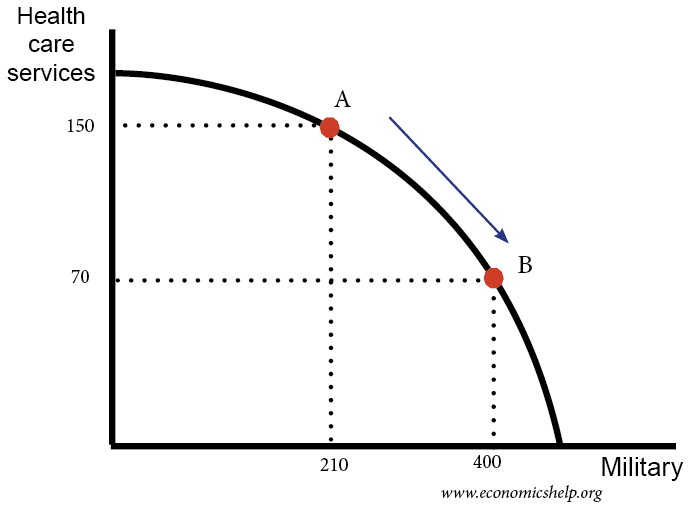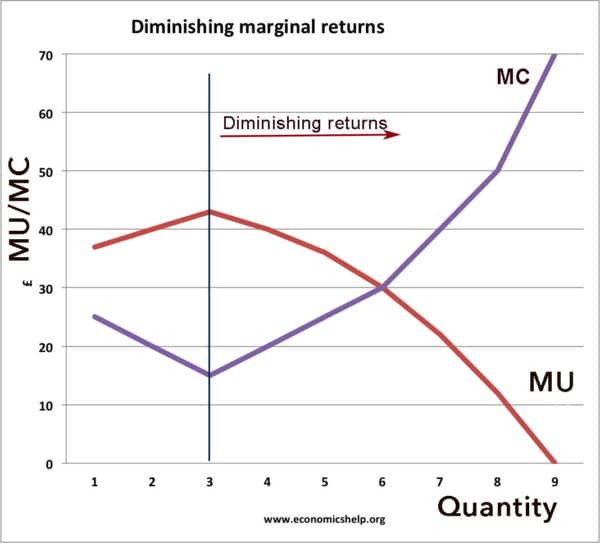Distributive efficiency occurs when goods and services are consumed by those who need them most.
Distributive efficiency is concerned with an equitable distribution of resources because of the law of diminishing marginal returns.
The Law of diminishing marginal returns states that as consumption of a good increase we tend to get diminishing marginal utility.
For example, if a millionaire already has three cars, but gets a fourth car – this fourth car will only increase his net utility by a small amount.
If by contrast, someone on a low income can get their first car, the marginal utility will be much higher.
Therefore, to be distributively efficient, society will need to ensure an equitable distribution of resources.
A monopoly could lead to distributive inefficiency. A monopoly is able to use its market power to set high prices and make super-normal profits. Thus a monopoly owner can gain a higher share of national output, but consumers face higher prices and a decline in consumer surplus.
Conflict Between Distributive Efficiency and Economic Efficiency
Ensuring an equitable distribution of resources may cause economic disincentives. For example, if people on high incomes see very high rates of marginal tax, they may stop working or work in another country. Therefore, society may see less output.
There is a trade-off between increasing equity and causing disincentives to work and take risks.
Generally, there is an assumption that a free market needs a degree of inequality to create some incentives for entrepreneurship etc.
Production possibility frontier and distributive efficiency

Theory of Distributive Efficiency
First mentioned by:
Lerner, Abba P. The Economics of Control. New York: Macmillan Co., 1944.
Related

